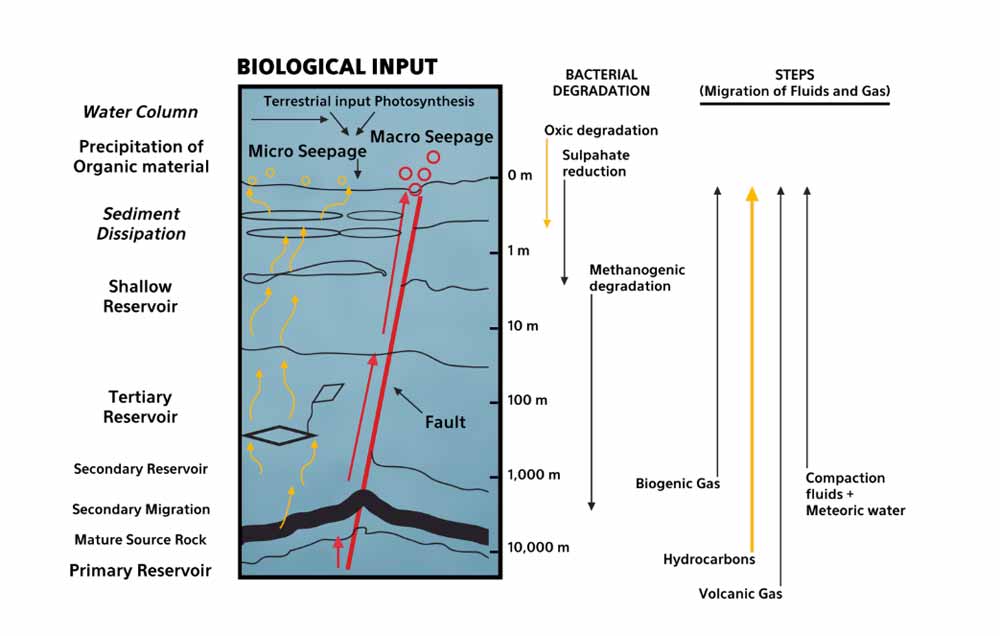Hydrocarbon Microseepage
What is it?
Hydrocarbon Microseepage occurs
Seepage produces changes in near-surface environment
These changes can be detected and mapped
Near-surface anomalies can be related to hydro-carbons at depth
Light hydrocarbon molecules (methane, ethane, propane, butane, thru C10+) escape from reservoirs and move vertically to the surface.
Hydrocarbon migration is buoyancy-driven, reflecting dynamic reservoir pressures.
Microseepage leads to recognizable and measurable changes in shallow soils and sediments.
The surface extent of these alterations have been shown to approximate the productive limits of reservoirs in the subsurface – predominately VERTICAL seepage.
Seepage produces changes in near-surface environment
These changes can be detected and mapped
Near-surface anomalies can be related to hydro-carbons at depth
Light hydrocarbon molecules (methane, ethane, propane, butane, thru C10+) escape from reservoirs and move vertically to the surface.
Hydrocarbon migration is buoyancy-driven, reflecting dynamic reservoir pressures.
Microseepage leads to recognizable and measurable changes in shallow soils and sediments.
The surface extent of these alterations have been shown to approximate the productive limits of reservoirs in the subsurface – predominately VERTICAL seepage.


